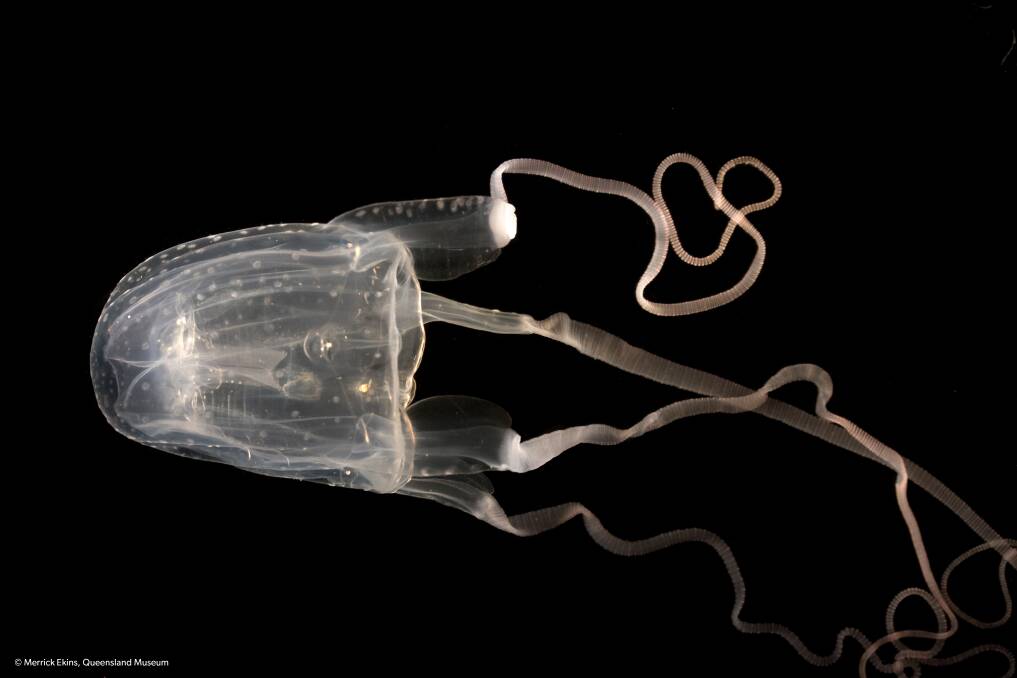
Researchers have discovered a rare and dangerous Moreton Bay jellyfish lurking among the mangroves in Lake Macquarie.
Subscribe now for unlimited access.
or signup to continue reading
The find has prompted Lake Macquarie City Council to issue a safety warning. The Morbakka fenneri jellyfish can cause Irukandji syndrome. A Morbakka sting can bring on symptoms including nausea, vomiting, severe lower back pain, breathing difficulties, profuse sweating, severe cramps and spasms. The incidence of stings is rare, and symptoms are typically mild, but some cases have required hospitalisation.
The marine researchers, from the Australian Museum, were conducting a study on an unrelated jellyfish when they came across the creature.
It was found near the border of the Lake Macquarie and Central Coast Local Government Areas. The Morbakka is a rare species that is more common to the Moreton Bay area, but has been found between Port Douglas and Sydney.
Lake Macquarie City Council manager of leisure services, Brad Sutton, said it was important for the community to be aware of the possible presence of Morbakka in the lake.
“With only one reported sighting across a large body of water, the risk appears to be low but residents should be aware of the possibility of encountering the jellyfish and know how to respond in the event of a sting,” Mr Sutton said.
“The best immediate treatment is liberal application of vinegar, which will neutralise the sting and prevent further envenomation.
“Applying hot or cold water is not recommended, nor is rubbing or wiping the area, as this can exacerbate the severity of the sting. A cold pack can be applied after the area has been treated with vinegar.”
Experts advise that an ambulance should be called, or medical assistance sought, if a sting victim shows any of the following symptoms: severe lower back pain, nausea or vomiting, breathing difficulties or spasms.
Morbakka fenneri has a transparent box-shaped bell with one tentacle in each corner. The bell can be six to 18 centimetres wide with four ribbon-shaped tentacles up to one metre long. They tend to swim near the waterway bottom, but can be attracted to lights at night.
Council has sought advice from, and will continue to work with, experts from the CSIRO and Australian Museum, including Dr Lisa-ann Gershwin, who is the foremost authority on the species.

